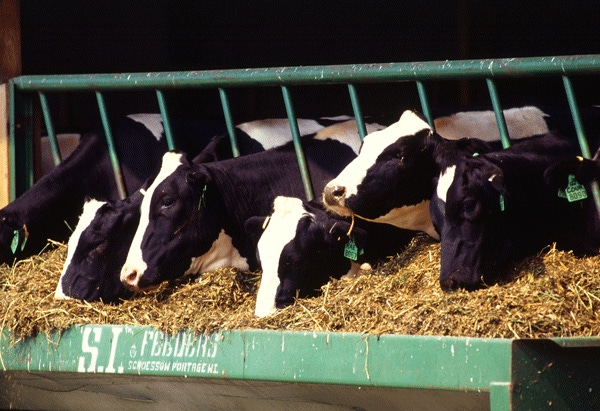May 26, 2011

Each June the dairy industry celebrates Dairy Month and promotes the importance of milk production, the nutritional value of dairy products, and the economic impact of the $110 billion dairy industry to the United States.
"Dairy managers will be challenged in 2011-2012 to remain economically viable as feed and fuel prices increase," said Mike Hutjens, University of Illinois professor of animal sciences emeritus. "They will need to find ways to produce milk at an economical price for consumers while maintaining the highest quality milk possible."
Hutjens said dairy managers are continuing to play catch-up after an economically disastrous 2009 and 2010 business year with milk prices down 40 percent.
Illinois dairy managers need $17 per 100 pounds or $1.45 per gallon of milk sold to cover feed, variable, fix, and labor costs with a return on assets.
Although current milk prices have been favorable, Hutjens said three factors will impact the price of milk and dairy farm profit margins this year.
"First, milk prices depend on supply and demand with more than 13 percent of current U.S. milk solids being exported," he said. "World demand may be impacted by the financial status in Europe and unrest in the Mideast areas."
Watch corn prices closely
In addition, corn prices will lower profit margins this year. He said the late planting of corn in the Midwest, flooding along major rivers, and drought in the Southwest will impact corn and feed prices.
He also expects that energy costs (price of oil) will impact fertilizer, fuel, and energy costs.
Hutjens said the most recent numbers are out for the "average" U.S. consumption of dairy products, and these numbers indicate a trend toward lower calorie diets. Dairy products that increased in consumption in 2009 compared to 2008 included yogurt (up 5.9 percent), cottage cheese (up 1.3 percent), reduced and low-fat milk (up 0.8 percent), and cheese (up 0.6 percent).
Flavored milk dropped 3.5 percent, whole milk dropped 2.8 percent, and ice cream dropped 2.4 percent.
The average expenditure for food in 2009 for a household was $6,443 with dairy products accounting for $430 of the total. Total fluid milk consumption was 20.7 gallons per person.
In this report, Hutjens said 52 ice cream flavors were listed with vanilla as the No. 1 ice cream flavor, followed by chocolate. Other unique ice cream flavors included coffee, moose track, peanut butter and chocolate, maple, orange, and egg nog.
Internationally, the U.S. had the highest milk yield per cow at 20,589 pounds per cow annually, followed closely by Japan at 20,564 pounds per cow. Other countries ranged from 18,484 pounds per cow in Canada, European Union at 12,156 pounds, China at 8,814 pounds, Russia at 7,518 pounds, and Mexico at 3,758 pounds per cow in 2009.
Hutjens said consumption patterns throughout the world indicate wide variation and tremendous potential for future sales. For example, in the United States, fluid milk consumption was at 198 pounds per capita while China consumed 23 pounds per capita.
"The international demand for high-quality protein and nutrients found in dairy products can become a huge market for U.S. dairy managers," Hutjens said.
You May Also Like




